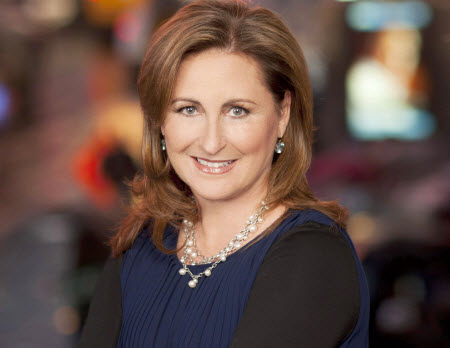Thriving on a Tougher Playground

Nickelodeon leads off the cable-network upfront season this Thursday (March 2) on a ratings and brand identity roll. Viacom’s recent naming of Nick and Nick Jr. as two of the six core brands that the company will put its resources behind follows the programmer’s strong 2016 performance: It finished as the top kid-targeted cable network on a total day basis in all major kids demos. Nickelodeon Group president Cyma Zarghami spoke with Multichannel News programming editor R. Thomas Umstead about Nickelodeon’s brand value within a crowded and competitive kids’ content marketplace. Here’s an edited transcript of their conversation.
MCN:From your perspective, what does Viacom’s choice of Nickelodeon as one of its six core franchise network brands mean for the network’s operational strategy?
Cyma Zarghami: One of the things that’s most exciting about it are the global opportunities for the network, because the two places where Nickelodeon has been able to really differentiate itself are global, and our success theatrically in our partnership with Paramount. So with the [Teenage Mutant Ninja] Turtles movies and the SpongeBob [SquarePants] movies — as well as four or five [movies] that we are pretty certain are coming in the next four years — along with the global opportunities to take all this IP even further around the world is exciting.
Also when [Viacom CEO Bob Bakish] called out the flagship brands, Nick Jr. was one of them. I would just add that the preschool success that we’ve had really is a testament to why Nick Jr. is one of those flagships. The success of Paw Patrol, Blaze and The Monster Machines, Shimmer and Shine, Bubble Guppies, Umizoomi and Mutt & Stuff has been an incredibly fruitful and creative journey for us. That’s one of the places where we see a great future.
MCN:How have you adjusted to new competitors like Amazon and Netflix playing aggressively within the kids TV marketplace?
CZ: Well there’s no doubt about it — in the entire industry, there is much more content than ever was before. We are not strangers to the idea that our partners are our competitors, our advertisers and our distribution partners. It’s a complicated web that we weave, but the great thing that remains true about the ecosystem that we’ve been able to create is that it features great content and has a brand identity.
When you think about some of the newcomers in the competitive space, there is a whole lot of content there that fits under one branded identity. I think what still remains true about Nickelodeon is that it stands for something to the audience, and I think that it’s our mission to make sure that brands still means something as the world becomes more commoditized and on-demand.
MCN:What should we expect to hear from Nickelodeon at the upfront?
CZ: One of the things we’ll be talking about at the upfront is the big change in the world that kids are living in, and their response to the world that they’re living in. It really has been a pretty seismic shift when you put it all together, and I think what we have been able to do is really figure out how to connect and be relevant to a new generation of kids. That shift has been going on for about five years, so it’s taken a little while for it to settle, but what we know about the audience now and how we’ve applied that to the content that we’re making has really made all the difference.
So you’ll hear things like authenticity is important to them, family is incredibly important to them, and having friends who are from different backgrounds and religions is important to them. If you look at the content that we’re making, all of those things are seeping their way into the storytelling and the character development in a very organic way, and that’s really making a difference.
MCN:Will Nick be creating new and original programming for digital platforms to reach kids where they are watching video content?
CZ: One of the great things about linear television is that in addition to still [being] the most-watched place for all content, it’s also the biggest marketing tool for new content. Extensions of things that kids see on television that make it to the other platforms rise to the top every single time.
Original content that starts on the other platforms don’t necessarily rise to the top at the same rate or level — it’s just harder. One of the things that still rings true about linear television is that if you are successful you get mass simultaneous reach, and you can’t get that any other way. That doesn’t mean that we shouldn’t be developing for all those other platforms and we shouldn’t make our apps the best they possibly can be, but first you have to build an audience for it.
The smarter way to stay on top of the multichannel video marketplace. Sign up below.
